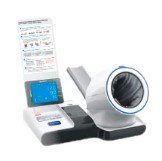Effective Communication Strategies with Chinese Phlebotomy Suppliers: Cultural Understanding, Clear Communication, and Quality Audits
Summary
- Understanding the cultural and language differences
- Importance of clear communication and documentation
- Regular quality checks and audits
Introduction
When sourcing medical supplies, including Phlebotomy Equipment, from Chinese suppliers, it is crucial to establish effective communication channels to ensure Quality Control and compliance with United States medical lab standards. This can often be challenging due to cultural and language differences. In this article, we will explore some effective ways to communicate with a Chinese phlebotomy supplier to ensure high-quality products that meet the standards of medical labs in the United States.
Understanding Cultural and Language Differences
One of the first steps in effective communication with a Chinese phlebotomy supplier is to understand and acknowledge the cultural and language differences that may exist. Chinese culture places a high value on hierarchy, respect, and saving face, which can impact communication styles. For example, direct confrontation or criticism may be viewed negatively, leading to misunderstandings or breakdowns in communication.
Key Points:
- Learn about Chinese cultural norms and communication styles
- Be aware of potential language barriers and work to overcome them
- Show respect and understanding towards cultural differences
Importance of Clear Communication and Documentation
Clear communication is essential when working with a Chinese phlebotomy supplier to ensure that product requirements are understood and met. This includes clearly defining specifications, timelines, and Quality Standards. Written documentation, such as detailed product descriptions, contracts, and Quality Control procedures, can help to avoid misunderstandings and provide a reference point for both parties.
Key Points:
- Use simple and concise language to convey requirements
- Ask for clarification if something is unclear
- Document all agreements and specifications in writing
Regular Quality Checks and Audits
Regular quality checks and audits are crucial when working with a Chinese phlebotomy supplier to ensure that products meet the standards required by medical labs in the United States. Conducting inspections at various stages of production, as well as random quality audits, can help to identify any issues early on and prevent them from impacting the final product.
Key Points:
- Establish a Quality Control process and standards
- Conduct regular inspections and audits of the production facility
- Address any quality issues promptly and work with the supplier to find solutions
Conclusion
Effective communication with a Chinese phlebotomy supplier is essential for ensuring Quality Control and compliance with United States medical lab standards. By understanding cultural and language differences, maintaining clear communication and documentation, and conducting regular quality checks and audits, you can build a successful partnership with your supplier and ensure high-quality products for your medical lab.

Disclaimer: The content provided on this blog is for informational purposes only, reflecting the personal opinions and insights of the author(s) on the topics. The information provided should not be used for diagnosing or treating a health problem or disease, and those seeking personal medical advice should consult with a licensed physician. Always seek the advice of your doctor or other qualified health provider regarding a medical condition. Never disregard professional medical advice or delay in seeking it because of something you have read on this website. If you think you may have a medical emergency, call 911 or go to the nearest emergency room immediately. No physician-patient relationship is created by this web site or its use. No contributors to this web site make any representations, express or implied, with respect to the information provided herein or to its use. While we strive to share accurate and up-to-date information, we cannot guarantee the completeness, reliability, or accuracy of the content. The blog may also include links to external websites and resources for the convenience of our readers. Please note that linking to other sites does not imply endorsement of their content, practices, or services by us. Readers should use their discretion and judgment while exploring any external links and resources mentioned on this blog.
